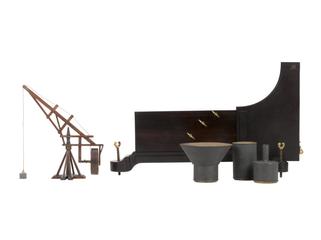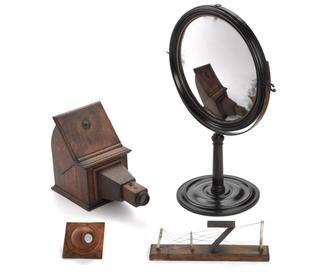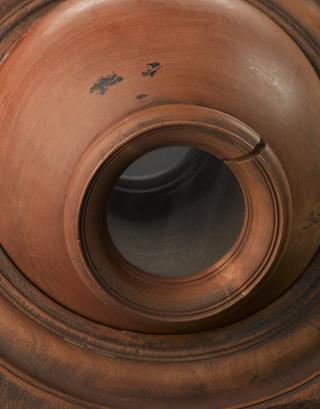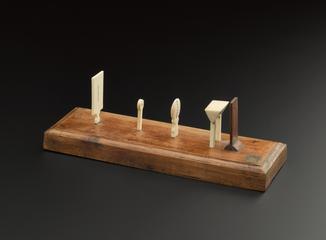
Demainbray's turquoise disc
- PART OF:
- Pair of coloured glass discs, 1750.
- Made:
- 1745-1755








Turquoise coloured glass disc, one of two, in wooden frame and stand, unknown maker, 1745-1755. Once belonged to Stephen Demainbray.
Pair of coloured glass discs. These glass discs once belonged to Stephen Demainbray and were used by him in his lectures on natural philosophy. In lecturing on the topic of colour, he was able to celebrate Isaac Newton's (1642-1727) theories on the spectrum, and treat the theories of his rivals 'in a candid manner'. Demainbray worked as superintendent at the King's observatory at Kew from 1768 and his collection of instruments and apparatus was absorbed into the King's own collection. They were itemised in the Queen's catalogue, but there described as blue and yellow, rather than turquoise and yellow.
Details
- Category:
- King George III
- Object Number:
- 1927-1156/2
- Materials:
- boxwood, glass, ivory and paper (fibre product)
- Measurements:
-
overall: 125 mm x 45 mm x 45 mm, 0.02 kg
- type:
- discs, glass discs and optical demonstration equipment
- credit:
- King's College, London




